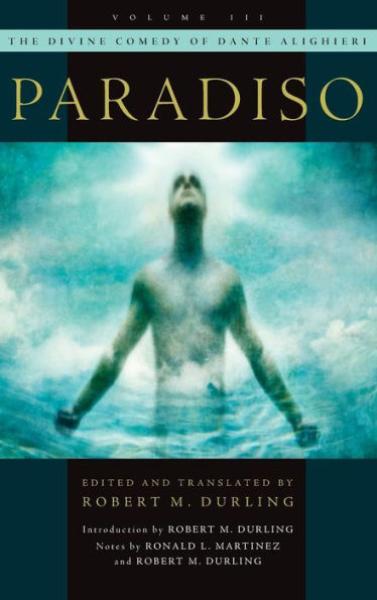Description
Reunited with his beloved Beatrice in the Purgatorio, in the Paradiso the poet-narrator journeys with her through the heavenly spheres and comes to know "the state of blessed souls after death." As with the previous volumes, the original Italian and its English translation appear on facing pages. Readers will be drawn to Durling's precise and vivid prose, which captures Dante's extraordinary range of expression--from the high style of divine revelation to colloquial speech, lyrical interludes, and scornful diatribes against corrupt clergy.
This edition boasts several unique features. Durling's introduction explores the chief interpretive issues surrounding the Paradiso, including the nature of its allegories, the status in the poem of Dante's human body, and his relation to the mystical tradition. The notes at the end of each canto provide detailed commentary on historical, theological, and literary allusions, and unravel the obscurity and difficulties of Dante's ambitious style . An unusual feature is the inclusion of the text, translation, and commentary on one of Dante's chief models, the famous cosmological poem by Boethius that ends the third book of his Consolation of Philosophy. A substantial section of Additional Notes discusses myths, symbols, and themes that figure in all three cantiche of Dante's masterpiece. Finally, the volume includes a set of indexes that is unique in American editions, including Proper Names Discussed in the Notes (with thorough subheadings concerning related themes), Passages Cited in the Notes, and Words Discussed in the Notes, as well as an Index of Proper Names in the text and translation. Like the previous volumes, this final volume includes a rich series of illustrations by Robert Turner.
"As Durling and Martinez complete their monumental three-volume presentation of Dante's masterpiece, we can sense their triumph and elation, despite their characteristic modesty. This, after all, is the volume with which they can demonstrate the fullness and consistency of Dante's great project, its final approach to what they describe in one footnote as 'a pitch of intensity unique in all literature.' The scholarship, as always, is graceful, comprehensive, and acute, and it surrounds a translation that is so carefully considered and fully realized as to be, at times, quite breathtaking."--David Young, translator of The Poetry of Petrarch
"Durling and Martinez deliver Paradiso in elegant English prose faithful to Dante's Italian. The general introduction and succinct notes to each canto enable an informed reading of a frequently daunting text, while the longer 'Additional Notes, ' bibliography, and indices will more than satisfy the most exigent critic. Marvelous, in the richest medieval sense of the term."--Michael Wyatt, author of The Italian Encounter with Tudor England
"At the end of his poem Dante claims that his 'high imagining failed of power, ' but Durling and Martinez have suffered no such fate in completing their translation of the Divine Comedy. Their Paradiso is a crowning achievement, a work of lucid prose and of impeccable accuracy. Readers will find themselves rewarded by the succinct, richly informative notes at the end of each canto and the extended essay-notes at the back of the volume. A splendid accomplishment."--Richard Lansing, editor of The Dante Encyclopedia
Product Details
- Oxford University Press, Brand
- Jan 5, 2011 Pub Date:
- 0195087429 ISBN-10:
- 9780195087420 ISBN-13:
- 873 Pages
- 9.49 in * 6.58 in * 2.06 in Dimensions:
- 3 lb Weight:




